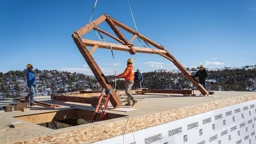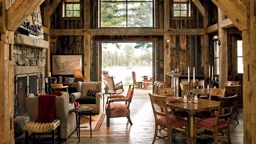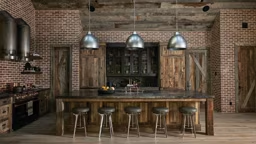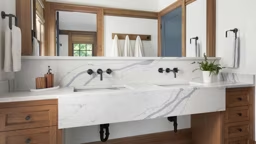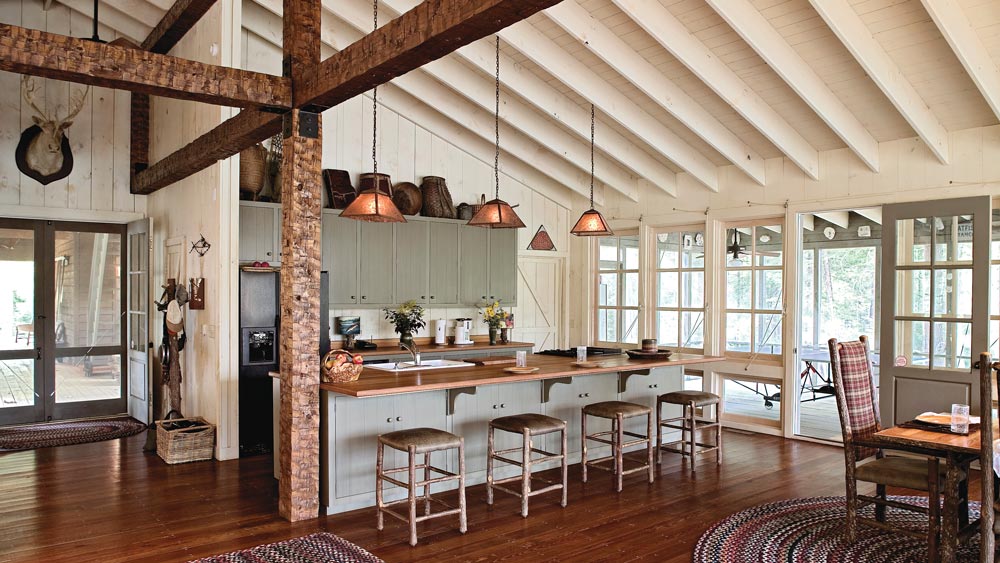
Among the myriad materials that can be used to build a timber frame home, few are as versatile — or as interesting — as reclaimed wood.
While the term often conjures images of weathered barn siding used to clad a home’s exterior (reclaimed wood does, in fact, often have its roots in rural, centuries-old outbuildings and defunct railroad trestles), the genre encompasses a far wider reach, both in origin and application. Jered Slusser of Pioneer Millworks says their sources include everything from sauerkraut vats to fence boards to shipping containers. The company inventories each piece of wood so that its provenience can be traced back its original setting.
Although salvaged materials come with natural indicators of the wood’s past life — nail holes, weather checking or insect markings — not all reclaimed wood veers rustic. “We can get a more modern aesthetic or farmhouse feel when it’s re-sawn and combined with certain finishes, like a whitewash,” explains Jered.
He is also quick to point out the flexibility of reclaimed wood. Not just for accents, an entire timber frame can be constructed out of reclaimed timbers “to incorporate an unparalleled level of storytelling into the structure itself” or reclaimed boards can be used in smaller doses, such as on floors, walls or ceilings to add a layer of textural interest and aesthetic appeal, as well as tried-and-true durability.
“However it’s used, every piece of reclaimed wood has a story to tell,” Jered says. “It creates a conversation that you can enjoy sharing with others. You just don’t get that kind of romance from new material.”





